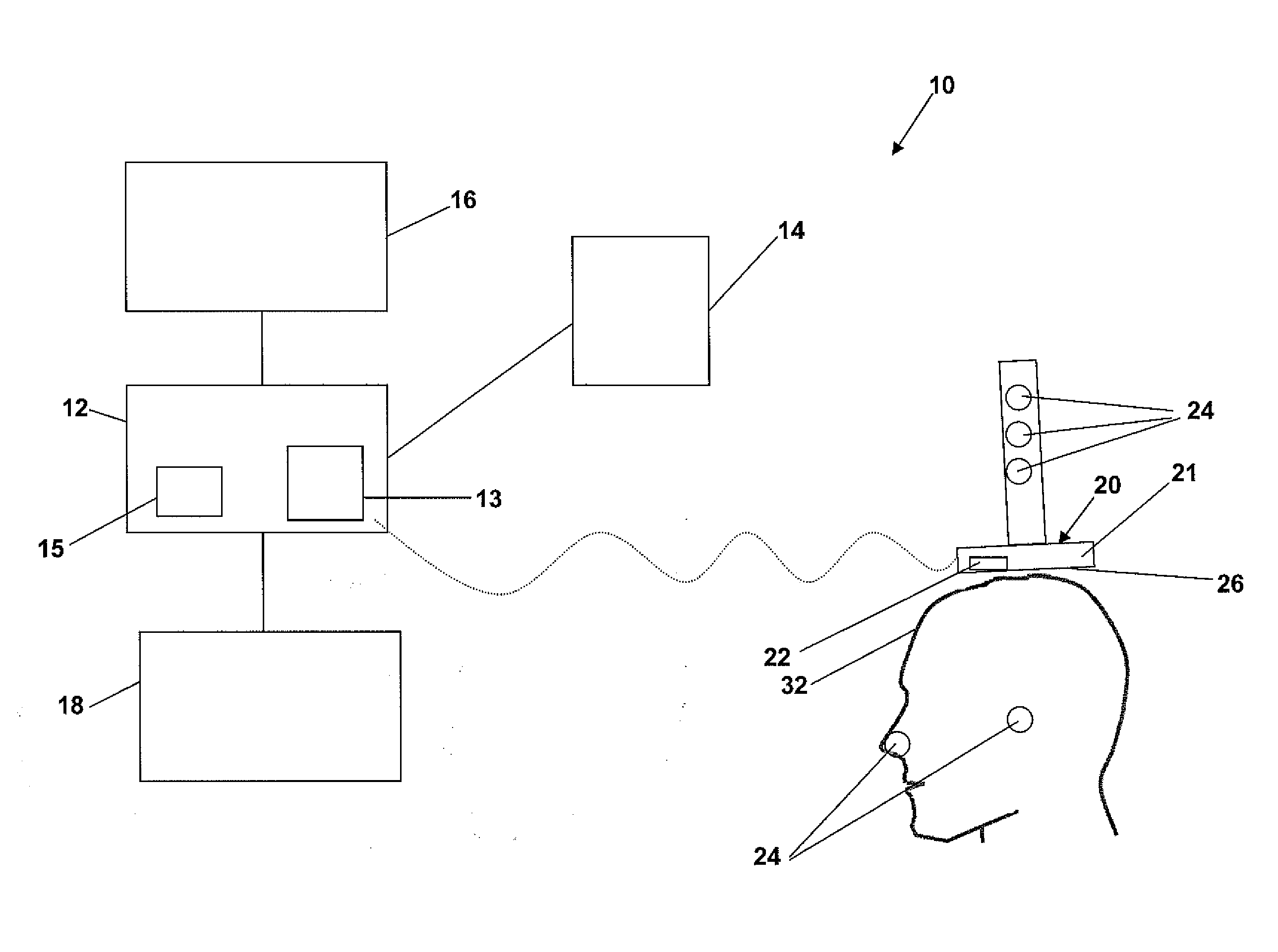Method and Apparatus for Correcting an Error in the Co-Registration of Coordinate Systems Used to Represent Objects Displayed During Navigated Brain Stimulation
- Summary
- Abstract
- Description
- Claims
- Application Information
AI Technical Summary
Benefits of technology
Problems solved by technology
Method used
Image
Examples
Embodiment Construction
[0026]In NBS, a display typically shows the position of a TMS coil device in relation to the scalp of a subject, while the user moves the TMS coil device to stimulate target sites on the brain. See, for example, U.S. Pat. No. 6,827,681, incorporated by reference herein. To generate such a display, a coordinate system used to represent the head of the subject in image data, such as MRI image data, is correlated with a coordinate system used to represent the positions of trackers on the TMS coil device and the head, using algorithms for transforming different coordinate systems into a single co-registered coordinate system well known and conventional in the art.
[0027]FIG. 1 illustrates an exemplary NBS system 10 that correlates coordinate systems used to generate representations of objects shown on an NBS display, such as, for example, a TMS coil device, a head and the scalp of the head, while a user moves the TMS coil device to stimulate target sites on the brain of the subject and, ...
PUM
 Login to View More
Login to View More Abstract
Description
Claims
Application Information
 Login to View More
Login to View More - R&D
- Intellectual Property
- Life Sciences
- Materials
- Tech Scout
- Unparalleled Data Quality
- Higher Quality Content
- 60% Fewer Hallucinations
Browse by: Latest US Patents, China's latest patents, Technical Efficacy Thesaurus, Application Domain, Technology Topic, Popular Technical Reports.
© 2025 PatSnap. All rights reserved.Legal|Privacy policy|Modern Slavery Act Transparency Statement|Sitemap|About US| Contact US: help@patsnap.com



